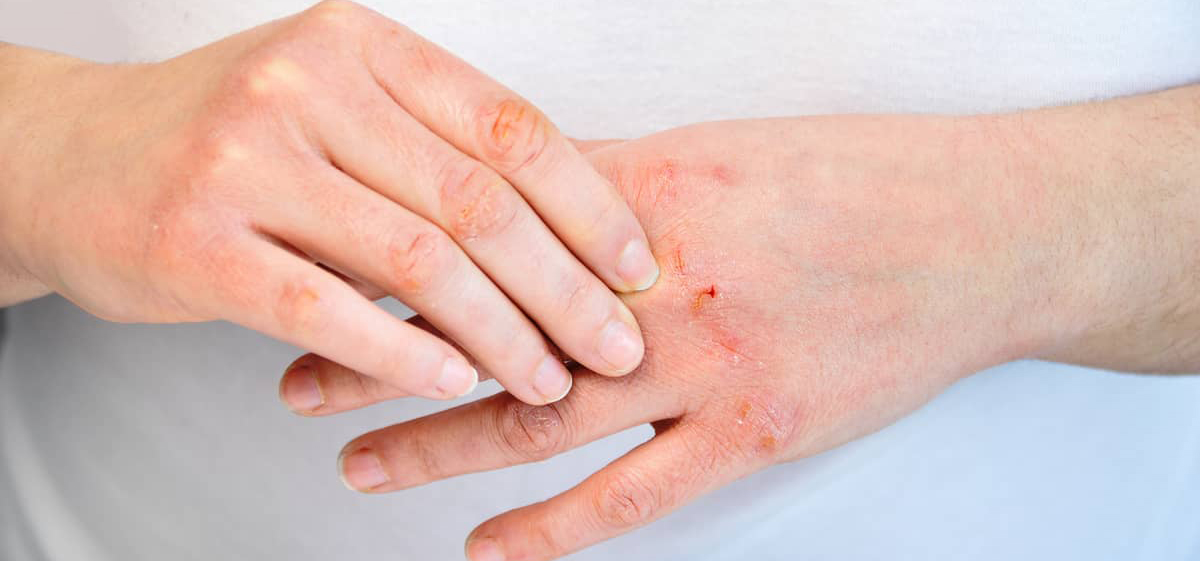
How to protect your workforce from Contact Dermatitis
One of the most common types of work related skin condition is contact dermatitis. Diagnosing this condition can be challenging for medical professionals as there are many different stages and both acute and chronic dermatitis symptoms can vary considerably.
When skin conditions arise in the hands, contact dermatitis is nearly always suspected. Factors like whether the condition improves away from work and relapses on return, or if more than one person in the workforce is affected are taken into consideration - but implementing a strategy for reducing contact dermatitis can help you avoid this slow process.
Here is some helpful guidance to assist you with preventing the leading causes of contact dermatitis which include contamination, sweating and irritation.
- Understand your workplace risk
Finding the right protection to reduce occupational skin disorders like contact dermatitis starts with understanding the hazards your people face. First, conduct risk assessments and observe, highlighting the major risks that may contribute to skin damage in the workplace. Here are some dangers to look out for:
- Immersing hands in chemicals
- Contact with contaminated work tools and surfaces
- Splashing when liquid or powder is mixed and handled
- Contact with materials that cause irritation, including global irritants etc.
- Harmful deposits in the air
- Communicate closely with your employees
An engaged workforce and regular opportunities to share information can be invaluable. Your employees understand the workings of day-to-day processes better than anyone else, but they also need a good understanding of the hand protection that is available.
- Understand how legislation impacts your response to contact dermatitis
Once you understand the risks that are in your workplace, there is legislation which will affect your response. The
HSE provides detailed guidance on how to stay compliant in battling contact dermatitis and how to meet your legal obligations.
- Choose compliant safety gloves
When looking at gloves to mitigate your workforce’s risks, check that they are compliant with the appropriate standards. It is also important to remember that lower quality gloves, or gloves that wear down more easily can contribute to skin irritation. Chemical accelerators used in the manufacture of some protective gloves are a leading cause of contact dermatitis. Some cut resistant gloves may also contain materials that can break down over time, such as fiberglass or steel creating fragments that can cause irritation for workers.
Poor-fitting gloves, or heavyweight materials can also cause extra friction and trapped heat, which will lead to sweating. Heavyweight, tight-fitting materials also cause friction against the skin and trap heat, which leads to sweating, then contact dermatitis.
If you are finding
hand injuries are rising in the summer months, heat relief for workers hands can help reduce hand injuries.
- Choose compliant sleeves
Sleeve contamination is a common cause of contact dermatitis. Your choice of sleeves can provide both better protection and reduce irritation. Contaminants can soak through sleeves or at the cuff, getting onto a workers skin. Whether it’s oil, chemicals, solvents, acids, airborne particles, or metal shavings, contamination on the sleeve can lead to irritable skin and contact dermatitis.
Moisture and contact dermatitis tend to go together. Sweat can also build up at the crook of the arm, as the sleeve rubs against the arm during natural work movements. This friction can lead to a build up moisture on the skin, making it more susceptible to irritation, rash and breaks.
- Take preventative measures to tackle contact dermatitis
Above all else, it is important to take a proactive approach to contact dermatitis. Across your gloves and the behaviours of your employees, you can significantly reduce your risk before an outbreak occurs.
Be sure to:
- Encourage workers to wash their arms and hands regularly
- Introduce skin cream such as a barrier cream - a topical formulation which creates a physical barrier between the skin and the irritants that cause contact dermatitis
- Consider the various sleeve and glove options available. We can recommend the best choice, best materials and protection, based on the exposures that you are up against.
Bring awareness of skin conditions into your procurement processes and decision making around cut-resistant sleeves and gloves. It’s not just about protection - it’s about comfort and preventing skin irritation too.
Speak to the experts at Anchor Safety and get advice and guidance on the challenges you’re facing.